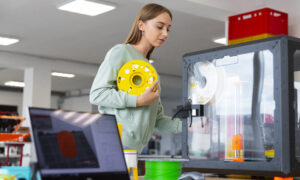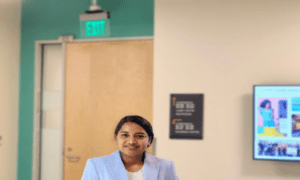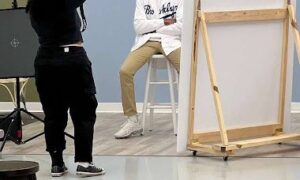Welcome to the future of manufacturing! Gone are the days of traditional assembly lines and mass production. Enter 3D printing, a revolutionary technology that has completely transformed the way we create, design, and even heal. From crafting intricate prototypes to fabricating life-changing prosthetics, this cutting-edge innovation holds immense potential in various industries. But as with any groundbreaking advancement, there are pros and cons to consider. So, fasten your seatbelts as we embark on a captivating journey through the realm of 3D printing, exploring its endless possibilities while uncovering its limitations.
Introduction
3D printing has been around for more than three decades, but it has only recently become widely available and affordable for consumers and businesses alike. Thanks to advances in technology, 3D printers are now able to create objects with increasing accuracy and detail.
There are many potential applications for 3D printing, including the ability to create customized or one-of-a-kind products, prototypes for new product designs, or even replacement parts for existing products. In some cases, 3D-printed objects can be used as substitutes for traditional manufactured goods. For example, prosthetic limbs that have been created with 3D printers can be individually customized to fit each patient’s unique body size and shape.
While there are many advantages to using 3D printing technology, there are also some disadvantages that should be considered before investing in a printer. For instance, the initial cost of a quality 3D printer can be quite high, and the learning curve associated with operating one can be steep. Additionally, not all materials can be printed using additive manufacturing processes, meaning that some products may still
Advantages of 3D Printing
3D printing offers a number of advantages over traditional manufacturing techniques. Perhaps the most significant advantage is its ability to create highly complex shapes that would be impossible to produce using other methods. 3D printing can also be used to produce customized products, which means that each product can be designed specifically for the customer who will use it.
Another advantage of 3D printing is that it is a relatively low-cost technology. The initial investment in a 3D printer is often less than the cost of traditional manufacturing equipment, and the running costs are also lower. This makes 3D printing an attractive option for businesses that want to reduce their manufacturing costs.
Finally, 3D printing is a green technology. Unlike traditional manufacturing processes, 3D printing does not generate waste products. This means that it can help businesses reduce their environmental impact and become more sustainable.
Disadvantages of 3D printing
3D printing has a few disadvantages that must be considered before investing in the technology. First, the initial cost of a 3D printer is quite high, with some models costing upwards of $10,000. Secondly, the learning curve for using a 3D printer can be steep and requires some technical knowledge. Finally, 3D printers are not yet widely available and are mostly found in niche markets.
Best Practices for 3D Printing
The popularity of 3D printing is on the rise, with more and more businesses and individuals turning to this technology to create prototypes and products. While 3D printing offers many benefits, there are also some potential drawbacks that you should be aware of before using this technology.
To help you make the most of 3D printing, here are some best practices to keep in mind:
1. Plan your design carefully.
Since 3D printing is a relatively new technology, there are still some limitations in terms of what can be created. As such, it’s important to carefully plan your design before starting the printing process. This will help ensure that your final product meets your expectations.
2. Use the Right Materials
There are a variety of materials that can be used for 3D printing, each with its own advantages and disadvantages. Be sure to select the right material for your project to ensure optimal results.
3. Consider the cost.
3D printing can be expensive, so it’s important to consider the cost of materials and equipment before getting started. In some cases, it may be cheaper and easier to outsource your 3D printing needs rather than invest in your own equipment.
4. Test your design.
Before committing to a design, it’s important to test it out using a 3D printer. This will help ensure that your final product meets your expectations and is of the highest quality.
5. Follow safety procedures.
3D printing involves the use of potentially hazardous materials, so it’s important to follow all safety procedures when using this technology. Be sure to wear protective gear and take all necessary precautions when operating a 3D printer.
Prototypes and prosthetics: how can 3D printing help?
3D printing has been around for a while now, and it has become increasingly popular in recent years. This technology can be used to create prototypes and prosthetics, and it has a lot of potential to help people with disabilities.
There are many different ways that 3D printing can be used to create prototypes and prosthetics. One of the most common methods is using a 3D printer to create a mold of the desired object. This mold can then be used to cast the final product.
Another method is known as direct fabrication. This involves creating the desired object directly from a 3D file. This method is often used for small objects or objects with complex shapes.
There is the process of additive manufacturing. This involves building up an object layer by layer from a 3D file. This method is often used for large objects or objects with very intricate designs.
Each of these methods has its own advantages and disadvantages. For example, direct fabrication is generally quicker and easier than other methods, but it can be more expensive. Additive manufacturing is usually slower than other methods, but it can produce more detailed and complex designs.
3D printing can be used to create a wide variety of objects, including prototypes and prosthetics. It has the potential to help people with disabilities in many different ways. If you are considering using 3D printing for your next project, it is important to weigh the pros and cons of each method before making a decision.
Conclusion
The potential of 3D printing is vast, from prototyping to prosthetics. By understanding the pros and cons of this technology, we can make more informed decisions about when it is appropriate to use it. 3D printing has the potential to revolutionize manufacturing processes and create innovative solutions for medical problems, but there are also environmental considerations that must be taken into account. As with any revolutionary technology, careful thought must be given before embracing its power in order to maximize its benefits while minimizing its drawbacks.

































